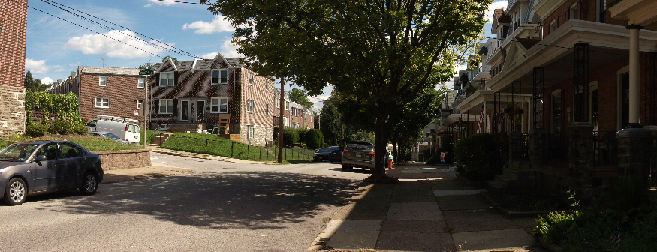 |
| The St. Stephen's Square proposal for 10th and Market |
PREIT has bought out the former Gimbels at 901 Market--the one that's now a Kmart; the original Gimbels, where the Disney Hole now sits, was torn down some 30 years ago--from Vornado, and is rumored to be planning on a $300 million renovation--though investor documents make one worry they're going to beg for government handouts first (for whatever reason). Meanwhile, the 1000 block of Market offers two distinct, and opposing, directions for the area to take.
The first is the the new Marshall's, whose design makes it feel a tad smaller than it really is, but which has a wide array of merchandise in stock. Marshall's tends to be something of a fixture in stronger downtowns. The other is a new Lot Stores in the old Valu-Plus; Lot Stores are notoriously ultra-low-end, and represent the continuing inertia of the area as hands wring, companies beg for money, and bloggers and people in general complain about how the retail there really should be an order of magnitude better.
The hope is, with the Girard Square proposal and Gallery redevelopment, Market East will begin to firmly improve itself. With oodles of retail space available, it can successfully cater to the Great Middle--the big boxes, mall chains, and so on--but to do that, it needs to have people dedicated to that vision constantly working on it.
Anyway, now that I've written myself into a corner, I'm segueing (somehow) to an idea I've been kicking around for the commercial part of the 900 block of Market: a pocket park, a public gathering space at the corner of 10th and Market, where "Center City's Main Street" and the City's Main Street meet. The idea is like Toronto's Dundas Square at the corner of Yonge and Dundas: a small public space as a gateway, and a more formal and gracious addressing of one of eastern Center City's main intersections.
Aside from Dundas Square, inspirations are: Herald Square, New York; Union Square, San Francisco; Pioneer Square, Portland; Westlake Park, Seattle; and Phillips Square, Montréal. All of these are retail areas defined by a public park, which has a varying degree of "green-ness" as well as average market affluence: a J.C. Penney prominently heralds Herald Square along with Macy's, and Dundas Square's main anchor is a Sears (of all things), but Nordstrom is a major anchor of Pioneer Place (the square, not the mall) and Saks sits prominently along Union Square. Also note that, on occasion, a church has pride of place--St. Phillips is one of Phillips Square's major landmarks, for instance.
In fact, St. Stephen's Church provides a high-quality side façade which helps mark a square at 10th and Market as a place, and offers it an intuitive name: St. Stephen's Square. It also gives the Lantern Theater Company a welcome front door (so to speak).
And it also offers a platform for redevelopment on two adjacent parcels: 920 Market is currently a sorry two-story structure, but the lot is large enough, and the site prominent enough, for something far denser; the same can be said for 1000 Market. It also affects both halves of the Gallery as well as 901 Market, helping to make the corridor a little more desirable.
And, like it or not, 10th and Market is a far more effective corner for such a space than 8th and Market, surprisingly out of the way.
